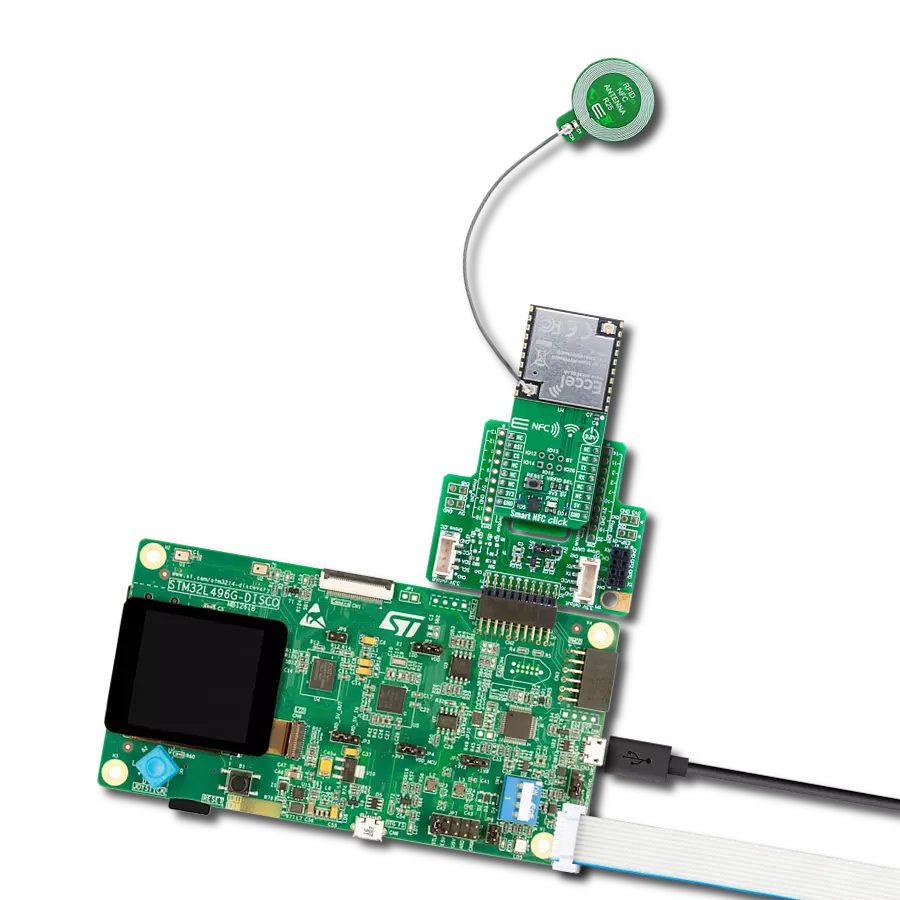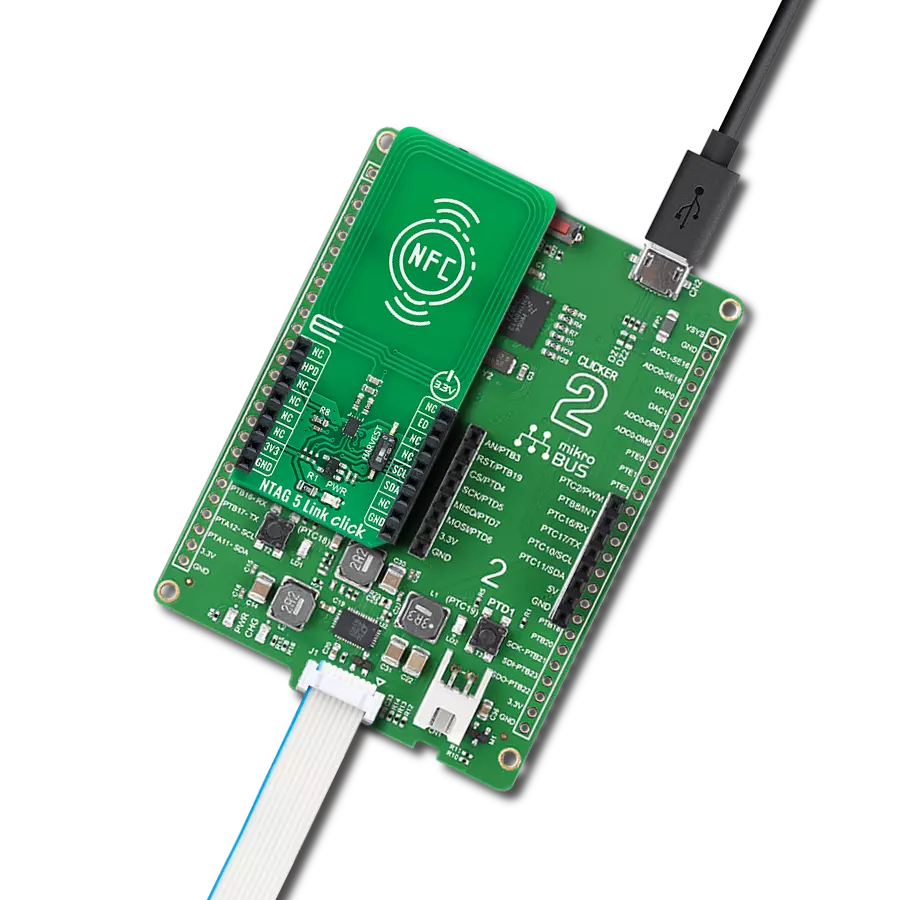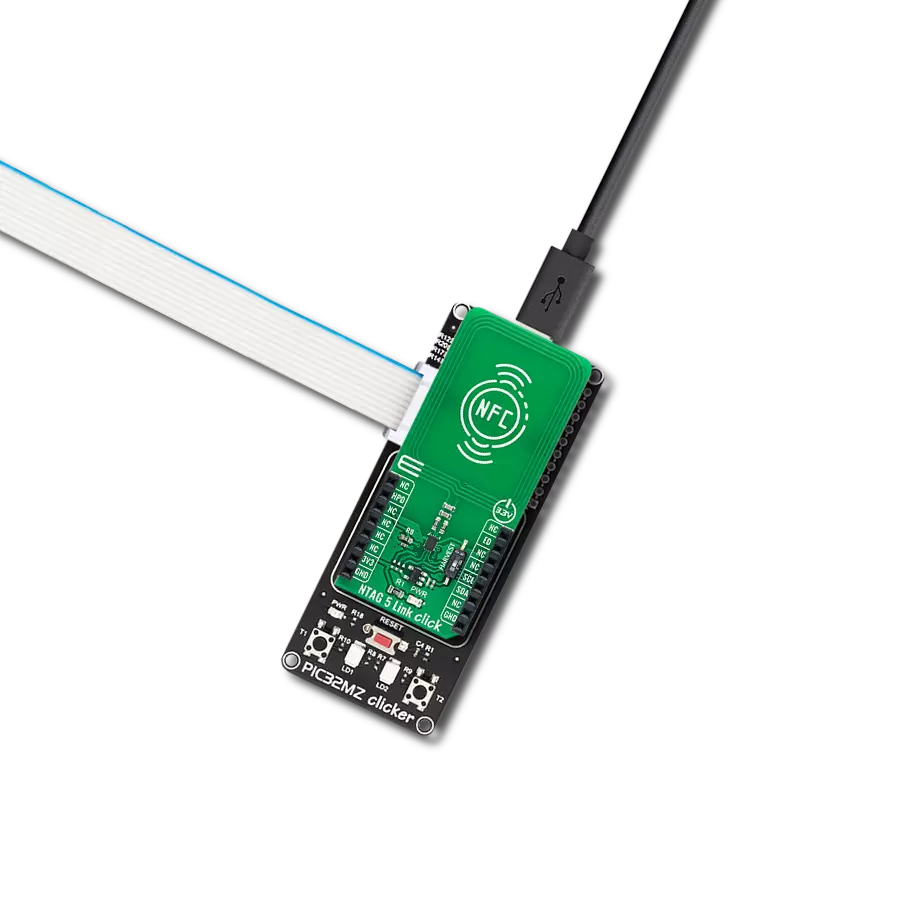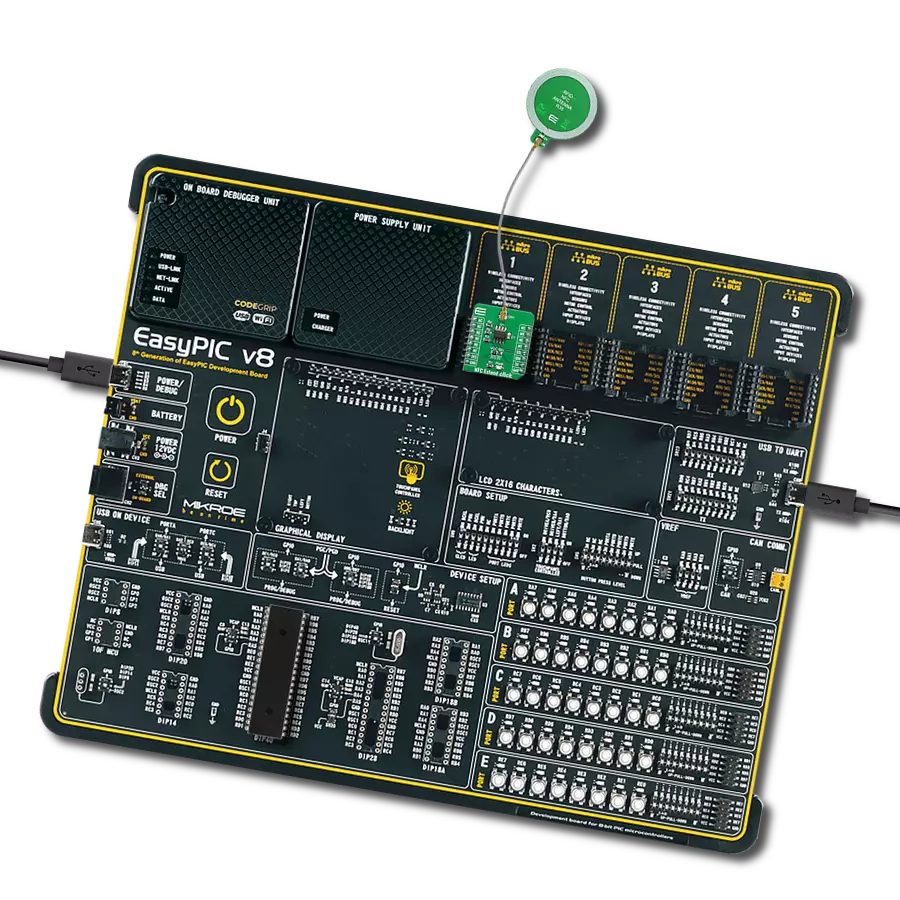Fast and efficient NFC communication is just a Click away!
A
A
Hardware Overview
How does it work?
NFC 5 Click is based on the ST25R3918, a multipurpose NFC transceiver from STMicroelectronics that enables NFC reader capabilities, passive peer-to-peer functions, and NFC card emulation. This component is designed to meet the needs of Internet of Things (IoT) applications and various consumer or industrial uses, providing outstanding analog performance. The ST25R3918 chip is adept for many NFC and HF RFID tasks, including applications in consumer electronics, IoT for accessory recognition, parameter adjustments, brand security, access management, customer engagement, and more. It complies with ISO14443 and ISO15693 standards, facilitating various NFC functions such as accessory recognition, brand protection, and consumer interaction, alongside supporting NFC Forum Tag types 1, 2, 4, and 5 in reader mode.
Thanks to its noise-reduction receiver technology, the chip stands out for its excellent read range with minimal power output, even in challenging conditions. It incorporates an advanced analog front end (AFE) and a comprehensive data framing system for NFC-A/B (ISO 14443A/B) readers, offering higher bit rates, and supports NFC-V (ISO 15693) reading up to 53 kbps. Additionally, it facilitates ISO 18092 passive initiation and targeting, along with NFC-A / NFC-F card emulation, enhancing device interaction with Android™ phones and enabling the use of Apple® App Clips through simple NDEF data exchanges. The ST25R3918 also features a low-power wake-up mode that detects cards by measuring the antenna signal's amplitude or phase, coupled with a low-power RC oscillator and wake-up timer that activates the device at set intervals to search for
tags. NFC 5 Click offers flexibility through its support for both SPI and I2C interfaces, selectable via the COMM SEL jumpers. By default, the I2C interface is active, supporting High-speed mode operation up to 3.4MHz, whereas the SPI mode accommodates clock frequencies up to 10MHz. To notify the host MCU of completed commands or external events, like the peer device field, the ST25R3918 signals an interrupt on the IRQ pin. The ST25R3918 has separated power and logic supply pins, and thanks to two onboard jumpers, labeled VCC and VIO, this Click board™ can operate with either 3.3V or 5V power/logic voltage levels. This way, both 3.3V and 5V capable MCUs can use the communication lines properly. Also, this Click board™ comes equipped with a library containing easy-to-use functions and an example code that can be used for further development.
Features overview
Development board
Kinetis Clicker is a compact starter development board that brings the flexibility of add-on Click boards™ to your favorite microcontroller, making it a perfect starter kit for implementing your ideas. It comes with an onboard 32-bit ARM Cortex-M4 microcontroller, the MK22FN512VLH12 from NXP Semiconductor, a USB connector, LED indicators, buttons, a mikroProg connector, and a header for interfacing with external electronics. Thanks to its compact design with clear and easy-recognizable silkscreen markings, it provides a fluid and immersive working experience, allowing access
anywhere and under any circumstances. Each part of the Kinetis Clicker development kit contains the components necessary for the most efficient operation of the same board. In addition to the possibility of choosing the Kinetis Clicker programming method, using USB HID mikroBootloader, or through an external mikroProg connector for Kinetis programmer, the Clicker board also includes a clean and regulated power supply module for the development kit. The USB-MiniAB connection provides up to 500mA of current, which is more than enough to operate all
onboard and additional modules. All communication methods that mikroBUS™ itself supports are on this board, including the well-established mikroBUS™ socket, reset button, and several buttons and LED indicators. Kinetis Clicker is an integral part of the Mikroe ecosystem, allowing you to create a new application in minutes. Natively supported by Mikroe software tools, it covers many aspects of prototyping thanks to a considerable number of different Click boards™ (over a thousand boards), the number of which is growing every day.
Microcontroller Overview
MCU Card / MCU
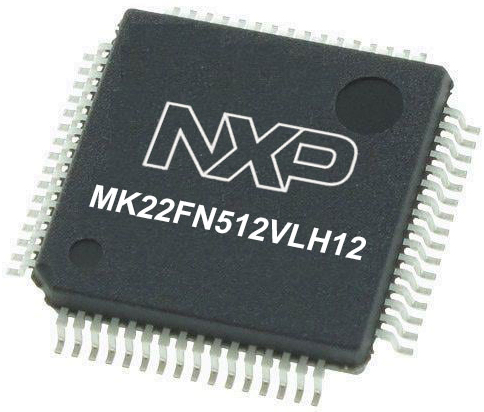
Architecture
ARM Cortex-M4
MCU Memory (KB)
512
Silicon Vendor
NXP
Pin count
64
RAM (Bytes)
131072
You complete me!
Accessories
RFID tag operating at 13.56MHz adheres to the ISO14443-A standard, ensuring high-frequency communication. This proximity card technology, often exemplified by MIFARE cards, facilitates secure and contactless interactions in applications like access control, public transport, and payment systems. The ISO14443-A standard defines the communication protocol, incorporating anti-collision mechanisms for simultaneous card handling. These RFID tags possess variable memory capacities, ranging from a few bytes to kilobytes, catering to diverse application needs. Ensuring data security, the standard integrates features such as encryption and authentication. These tags, exemplified by MIFARE technology, are widely used for their efficiency and are vital in enhancing convenience and security in diverse identification and access scenarios.
Used MCU Pins
mikroBUS™ mapper
Take a closer look
Click board™ Schematic
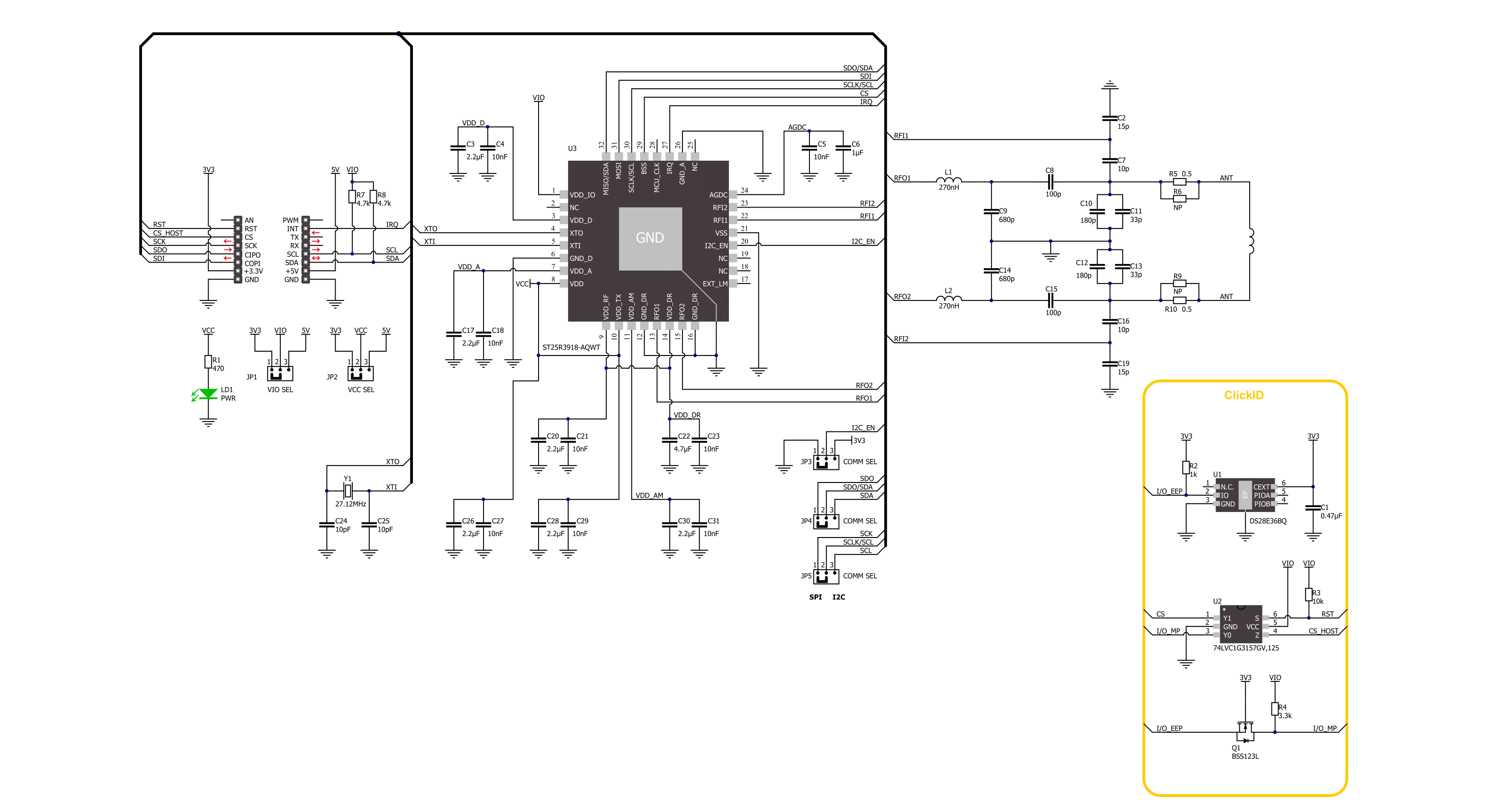
Step by step
Project assembly
Software Support
Library Description
This library contains API for NFC 5 Click driver.
Key functions:
nfc5_get_mifare_tag_uid- This function reads the UID of a mifare tagnfc5_write_reg- This function writes a desired data to the selected registernfc5_read_reg- This function reads a desired data from the selected register
Open Source
Code example
The complete application code and a ready-to-use project are available through the NECTO Studio Package Manager for direct installation in the NECTO Studio. The application code can also be found on the MIKROE GitHub account.
/*!
* @file main.c
* @brief NFC 5 Click example
*
* # Description
* This example demonstrates the use of NFC 4 Click board by reading
* MIFARE ISO/IEC 14443 type A tag UID.
*
* The demo application is composed of two sections :
*
* ## Application Init
* Initializes the driver and performs the Click default configuration.
*
* ## Application Task
* If there's a tag detected, it reads its UID and displays it on the USB UART every 500ms.
*
* @note
* Only ISO14443-A type tags are compatible with this example.
* We recommend MIKROE-1475 - an RFiD tag 13.56MHz compliant with ISO14443-A standard.
*
* @author Stefan Filipovic
*
*/
#include "board.h"
#include "log.h"
#include "nfc5.h"
static nfc5_t nfc5;
static log_t logger;
void application_init ( void )
{
log_cfg_t log_cfg; /**< Logger config object. */
nfc5_cfg_t nfc5_cfg; /**< Click config object. */
/**
* Logger initialization.
* Default baud rate: 115200
* Default log level: LOG_LEVEL_DEBUG
* @note If USB_UART_RX and USB_UART_TX
* are defined as HAL_PIN_NC, you will
* need to define them manually for log to work.
* See @b LOG_MAP_USB_UART macro definition for detailed explanation.
*/
LOG_MAP_USB_UART( log_cfg );
log_init( &logger, &log_cfg );
log_info( &logger, " Application Init " );
// Click initialization.
nfc5_cfg_setup( &nfc5_cfg );
NFC5_MAP_MIKROBUS( nfc5_cfg, MIKROBUS_1 );
err_t init_flag = nfc5_init( &nfc5, &nfc5_cfg );
if ( ( I2C_MASTER_ERROR == init_flag ) || ( SPI_MASTER_ERROR == init_flag ) )
{
log_error( &logger, " Communication init." );
for ( ; ; );
}
if ( NFC5_ERROR == nfc5_default_cfg ( &nfc5 ) )
{
log_error( &logger, " Default configuration." );
for ( ; ; );
}
log_info( &logger, " Application Task " );
}
void application_task ( void )
{
uint8_t tag_uid[ NFC5_NFCA_CASCADE_3_UID_LEN ] = { 0 };
uint8_t tag_uid_len = 0;
if ( NFC5_OK == nfc5_get_mifare_tag_uid( &nfc5, tag_uid, &tag_uid_len ) )
{
log_printf( &logger, " TAG UID: " );
for ( uint8_t cnt = 0; cnt < tag_uid_len; cnt++ )
{
log_printf( &logger, "0x%.2X ", ( uint16_t ) tag_uid[ cnt ] );
}
log_printf( &logger, "\r\n----------------------------------\r\n" );
Delay_ms ( 500 );
}
}
int main ( void )
{
/* Do not remove this line or clock might not be set correctly. */
#ifdef PREINIT_SUPPORTED
preinit();
#endif
application_init( );
for ( ; ; )
{
application_task( );
}
return 0;
}
// ------------------------------------------------------------------------ END


























